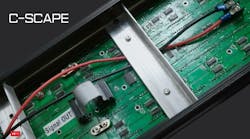What you’ll learn:
- Dealing with risk factors.
- Selecting the right RF technology.
- How to handle regulatory and cellular carrier certification processes.
Development of products including sophisticated electronic systems is never easy. Though some elements of design have become easier thanks to the widespread availability of single-board computers (SBCs), highly multifunctional modules, off-the-shelf sensors, and useful embedded code-generating tools (along with the ever-evolving traditional toolsets), some new issues have arisen along with long-term challenges that have never gone away.
Some of the top challenges include:
Establishing Clear Expectations
This is a case of “if you don’t know where you’re going, how do you know when you will get there?” Too often projects start with unrealistic or ambiguous goals. This could be related to ill-defined or expanding target feature sets. Sometimes, the use cases are unclear. In such cases, the pain point is in the need to have frequent churn on the design that wreaks havoc with schedules and cost.
Overcoming Preconceived Notions Related to Time, Cost, and Risk
Too often, business leaders have an unrealistic expectation as to how long it will take to create the design, how much it will cost, or how much risk a project will entail. Just because a product looks simple and elegant doesn’t imply that realizing such a goal was easy or fast.
Also, while it’s fine to undertake a project that involves risk, understanding the impact of such risk is often under appreciated. Taking on project risk (or too many project risk areas) comes with the commensurate potential for cost and schedule overruns. In very high-risk technologies, the desired goal may not even be attainable. When assuming extraordinary risk, few are prepared for the possibility that “failure is an option.”
Selecting the Optimal RF Strategy
So many RF technologies are out there these days. One of the challenges in electronic systems is picking the right technology for the application. Everyone wants the latest and greatest “bleeding-edge” potential capabilities. However, those of us designing products know there’s a reason such leading-edge technologies are called “bleeding edge”—it means someone is bleeding.
The difficulty facing electrical engineering team members is picking a technology that’s cognizant of the performance needs, cost (and recurring costs), implementation costs, data-rate costs, and infrastructure robustness/ubiquity. Making a mistake can be costly and time consuming.
In addition, as many products today include multiple radio technologies, integrating all of these radios in tight confines presents a system integration problem. Antenna and radio interference present a significant engineering challenge. Tradeoffs that include data rates, power consumption, and range all need to be considered.
Handling Regulatory and Cellular Carrier Processes
These days, in products where physical volume isn’t a major issue, the availability of pre-certified modules can speed the approval process. Particularly in the case of cellular radios, having a pre-carrier certified module can cut months of queue time from the development process.
However, in some cases, physical volume constraints will drive the need to put a pre-certified chipset down on the PCB. Such pre-certification helps, but because the PCB hasn’t been approved at the board level, the carrier certification process is significantly longer than with the use of an off-the-shelf module.
Likewise, other regulatory processes can cause significant pain to the designer’s desire to get the project finished. Anyone who has gone through FCC and UL certification testing knows that all kinds of issues can pop up unexpectedly involving radiated and conducted emissions. Even successful engineering validation tests before regulatory submission doesn’t guarantee success in regulatory testing. There are so many variables including the test setups. All of this racks up in time and cost.
Managing High-Density Electronics
Tied in with system issues related to radios, high-density board designs present their own challenges. Management of heat, physical space for components and traces, and tradeoffs related to board layers all present significant difficulties.
As the old saying goes: “Nobody said this would be easy.” Very simple problems and early proof-of-concepts may have relatively easy solutions. For those of us developing complex, multifunctional, multidimensional solutions subject to real-world environmental and business issues, the job remains challenging. That’s what we signed up to do.


